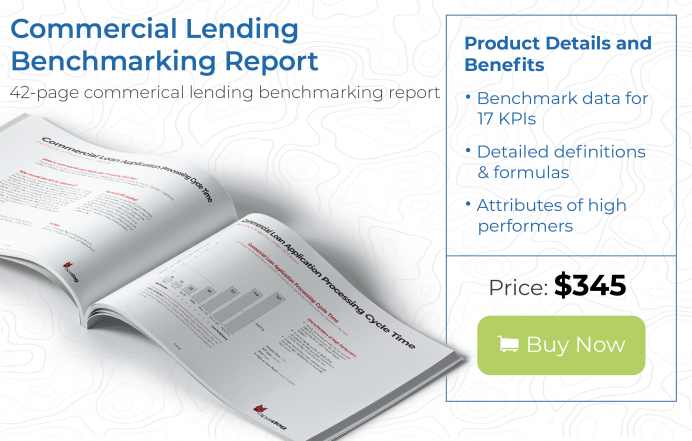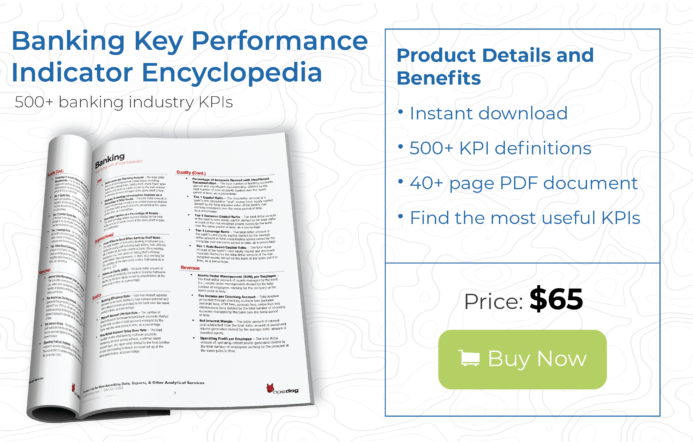Once the loan officer closes the deal—whether it’s a residential mortgage for a first-time home buyer, a commercial real estate loan for a sophisticated investor, or an automobile loan for a long-time customer—loan employees usher the loan from origination to closing and servicing. The productively and efficiency of these employees makes a big difference in both lender profitability and borrower happiness. One of the best ways to increase the proficiency of loan officers is through the use of loan employee performance metrics.
What are Loan Employee Performance Metrics?
Loan employees can be defined as employees that often work in the back office and are responsible for a wide variety of tasks. Those in origination focus on compiling the documentation and information needed for underwriting and eventually funding and closing of the loan. They are often in contact with borrowers, even sometimes handholding borrowers through the origination process.
In servicing, loan employees manage the health of the loan portfolio such as identifying loans that are in danger of default, handling payments and answering borrower questions. Employees in both areas must also follow stringent regulatory guidelines.
Loan employee performance metrics can be defined as metrics or key performance indicators (KPIs) that can measure and track both back office employee and lender efficiency throughout all aspects of lending operations.
Measuring loan employee performance involves analyzing both the human aspect—how well the employee is able to do his or her job—and your processes and procedures. A top-performing employee will not be able to work to their potential if they are forced to work on outdated technology, reenter data, or have to constantly reach out to borrowers to submit required paperwork. For example, having an e-signature solution so employees don’t have to present borrowers with hard-copy documents will save employees valuable time that they could spend on more value-added tasks.
How to Use Loan Employee Performance Metrics
Comparing loan employee KPIs with other lenders allows you to determine if your organization is more or less productive or efficient than other lenders. Once you have a baseline metric, you can track the effectiveness of any changes you decide to make.
What these loan employee performance metrics won’t reveal is the root cause of low (or high) performance. You’ll need to evaluate everything from your hiring process to how easy it is to fully complete your loan application to how well you communicate with third-party providers such as appraisers, insurers, title companies, and the like.
Explore all possible causes of low performance. Here are a few questions to get you thinking:
- Do employees receive adequate training and support?
- Is there high employee turnover?
- Do employees spend time doing redundant tasks?
- Am I overstaffed?
- Do employees have access to job-aids?
- Are there a lot of errors on loan applications?
- Are employees spending too much time on low-value foreclosure and loss mitigation cases?
- Are underwriters trained on credit policies?
- Do employees proactively and clearly explain to borrowers all stipulations and financial covenants before closing?
Loan Employee Performance Metric Examples
Here are five commonly used loan employee performance metrics.
KPI Metric #1: Commercial Loans Outstanding per Loan Servicing Employee
Loan servicing employees handle a variety of tasks including communicating with commercial borrowers for issues such as loss mitigation, escrow management, collections, payment modification, and investor relations. It’s typically a fast-paced environment and productivity matters. If employee performance is less than optimal, look at overstaffing, manual processes, or inadequate employee training as possible reasons.
To calculate, divide the dollar amount (principal plus interest) of unpaid, interest-bearing commercial loan balances by the number of loan servicing employees. Do not include loans that are not accruing interest.
KPI Metric #2: Consumer Loan Applications per Consumer Loan Processing Employee
Consumer loan processing employees step in after the loan officer makes the sale. These employees prepare loans for closing, including gathering and reviewing documentation, coordinating third-parties such as appraisers and inspectors, and communicating with borrowers. The best processors are organized and focused and work quickly under pressure.
To calculate, divide the number of consumer loans processed by the number of consumer loan processing employees. Don’t include loan officers in the calculation.
KPI Metric #3: Commercial Loan Application Processing Cycle Time
Measuring cycle time is important in understanding how efficient your application process is. If borrowers don’t understand what documentation they need to supply or make errors in their applications, it will take longer for you to process these applications. Or, perhaps your employees are inexperienced or not well trained. Borrowers have little patience for lengthy cycle times.
To calculate, divide the number of calendar days required it to process a commercial loan, from the day you receive an application to submitting the loan to underwriting, by the number of commercial loan applications.
KPI Metric #4: Consumer Loans Closed per Consumer Lending Employee
Loan origination volumes ebb and flow, with some periods much busier than others. Having the right staffing levels to handle volume volatility yet not overstaff is a challenge. Measuring the number of loans closed per lending employee allows you to better understand staffing needs based on employee productivity.
To calculate, divide the number of consumer loans closed by the number of consumer lending employees. Do not include loan servicing employees or loans that you’ve funded but not yet closed.
KPI Metric #5: Percentage of Commercial Loans Extended
Commercial borrowers can ask lenders to extend their loan maturity dates for a number of reasons, such as poor economic conditions, market disruption, or loss of an important customer. However, too many borrowers requesting extensions means you have less capital available to make other loans.
To calculate, divide the dollar amount of restructured commercial loans by the total dollar amount of outstanding commercial loans, as a percentage. Include both performing and non-performing loans.
Final Thoughts
While marketing and business development are critical in bringing new consumer and commercial loans in the door, that’s only one part of a successful lending operation. Loan employees who can get loans through the approval process as quickly and smoothly as possible and those who can prioritize servicing tasks while meeting borrowers’ needs will lower your operating costs, improve the borrower experience, positively impact your bottom line, and boost your financial health.
For a full list of loan employee performance metrics and other banking KPIs, download our Banking Key Performance Indicator Encyclopedia here.
If you need more help in developing an inventory of metrics for your commercial lending operations then be sure to utilize our Commercial Lending Benchmark Report for 42 pages of in-depth information, or contact us for more information on our Benchmarking Research and business intelligence implementation services. We will help you benchmark your back office loan operations and provide you with presentation-ready, high-quality deliverables at an affordable price.




